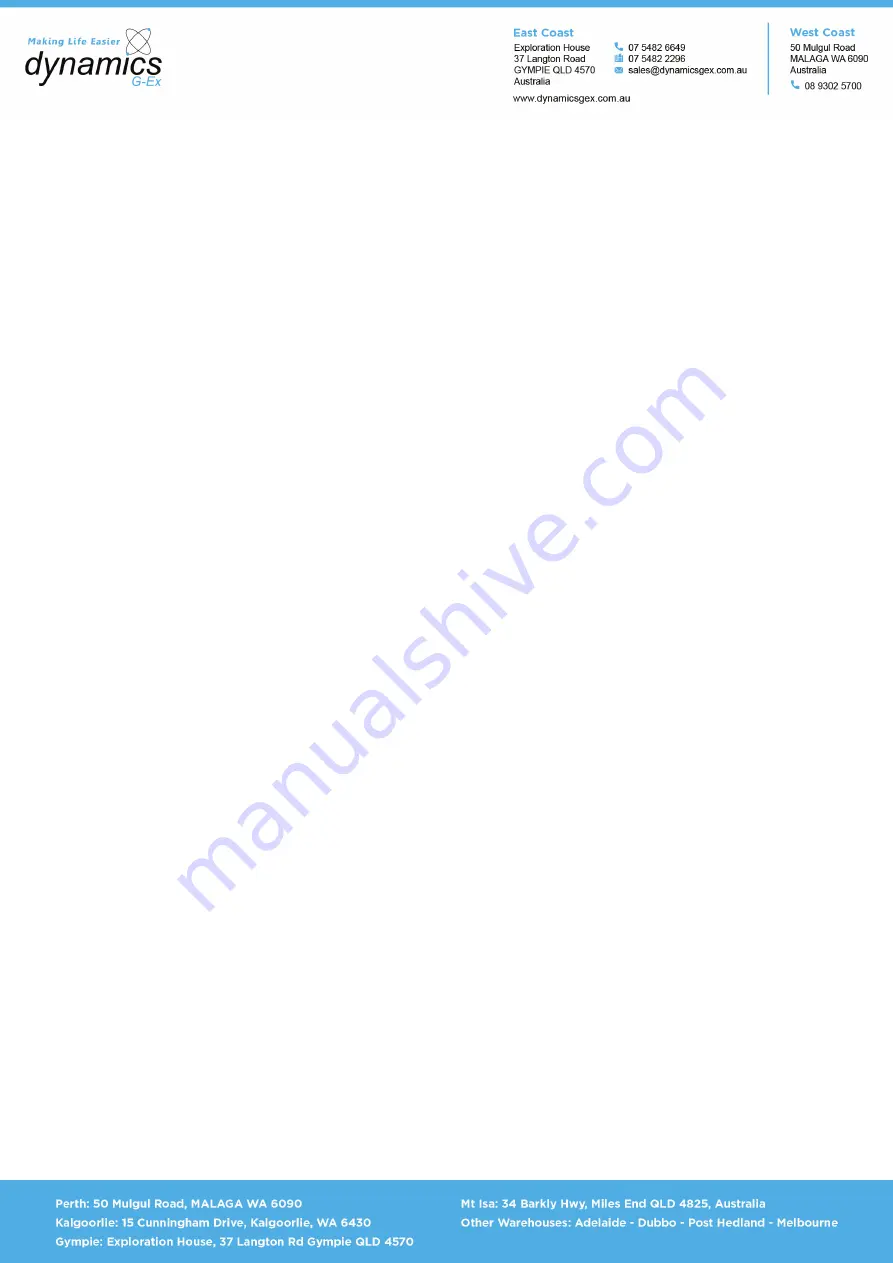
7
Table rollers
1. Rollers should be aligned on both rails and table should be able to move freely.
Blades and blade setting
2. Blade should be mounted solidly and firmly to prevent pounding which can seriously damage
blade.
3. Always check blade depth before commencing work so that table does not come into contact
with table.
4. Blade cutting height can be set by locking hand knob on to arm fitted to left side of machine.
Release and lock the hand knob for blade height.
5. Keep wet cutting diamond blades cool whilst cutting. Blade slots allow for thermal expansion,
blade flexing under pressure and allows water to pass through which will cool blades, remove
cuttings and dust.
6. IMPORTANT! Keep an adequate flow of water on both sides of blade. A blade that is allowed
to become dry even for a short time may become damaged or ruined. Too little water is evident
when steam is seen rising from cutting area.
7. Diamond blades are easily damaged, so ensure they are adequately protected if being
transported.
8. If diamond blade is chipped or missing segments, return to Dynamics G-Ex for repair/
replacement. Always inspect blades regularly.
9. This machine takes 350mm (14”) diamond blades which will provide 110mm cutting depths.
10. If in doubt, contact Dynamics G-Ex for correct selection of diamond blades.
Operating machine
1. Before turning on machine, material to be cut should rest securely on table up against fence or
adjustable work guide.
2. Water supply should be connected (see section on connecting water above) and pump drive
connected.
3. Switch on the electric motor (or switch on the petrol engine, pull cord to start and adjust RPM
accordingly).
4. Push the conveyor cart with cutting piece gently towards the blade. Do not use excessive force.
Several shallow cuts will produce more efficient results than one deep cut.
5. To prevent freshly cut surfaces binding and fouling the blade, locate work after the cut is
completed.
Operating Instructions




























